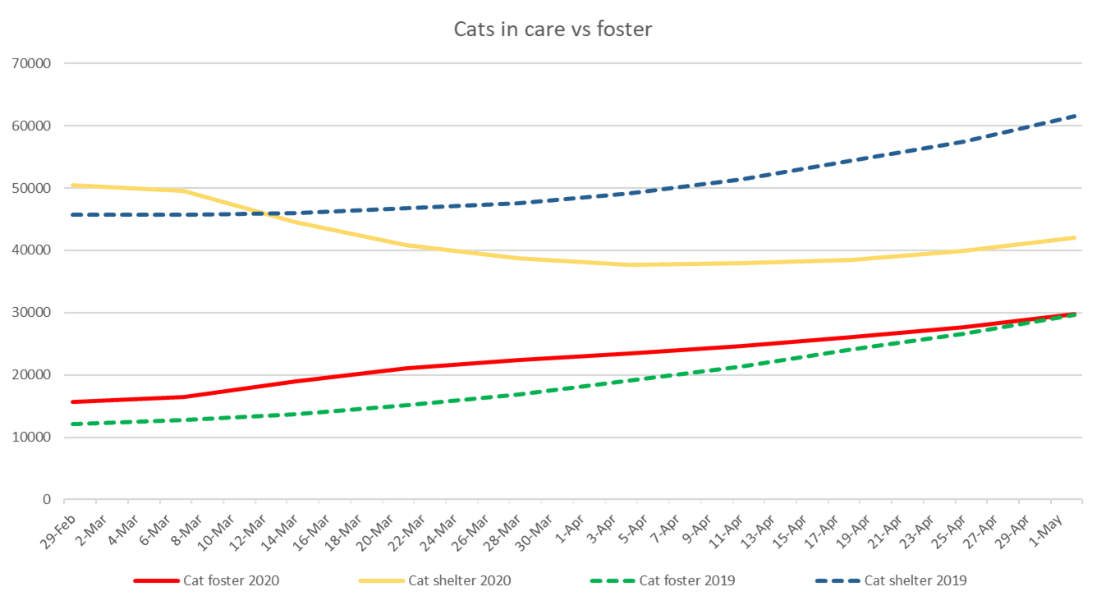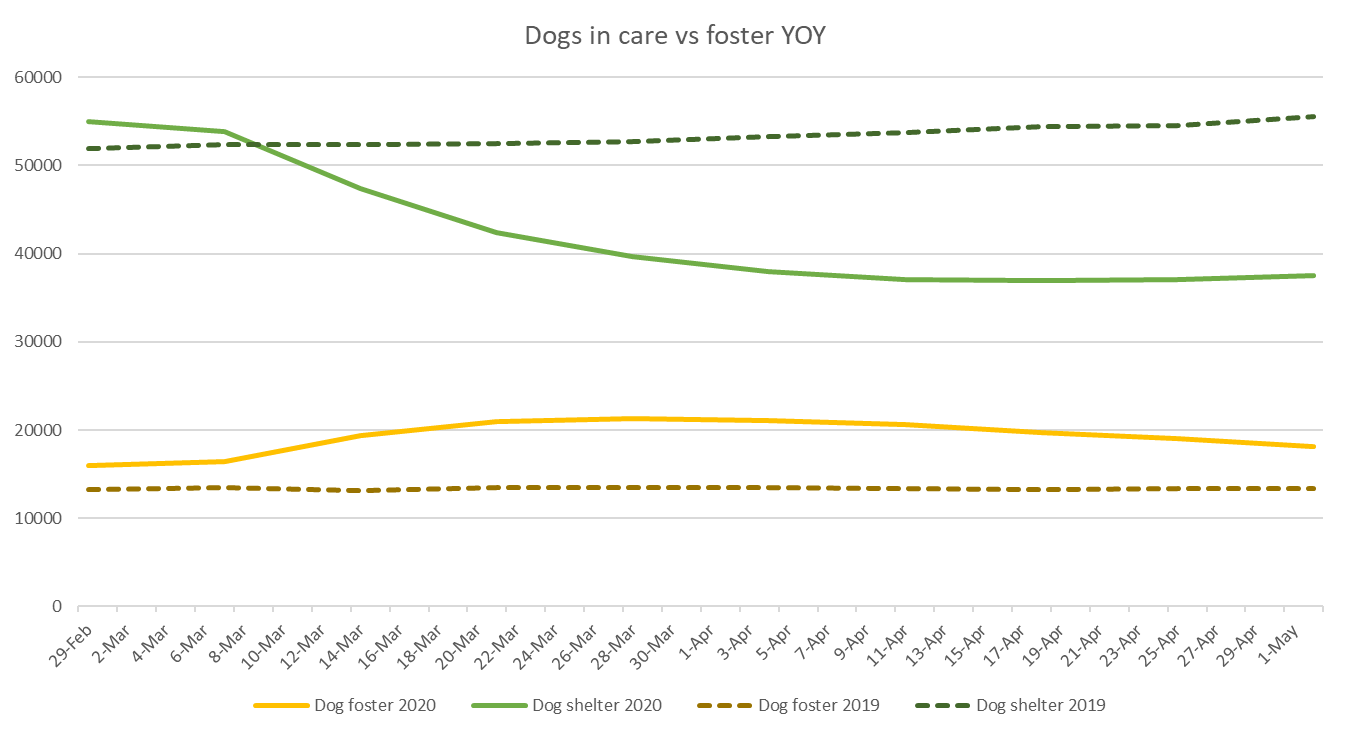
Data Proves Power of Managing Intake
COVID-19 has had a major impact on us all. But through all the tragedy and turmoil, one of the silver linings that has emerged has been shelters across the nation sharing images of their empty facilities. The empty kennels have been an amazing gift to shelters as they have worked to save lives, serve the public, protect and manage their staff—all while practicing social distancing.
But what is driving the empty shelters? Just as importantly, what can we do to sustain it? Because wouldn’t it be nice if we could never return to a world where shelters were bulging at the seams with animals?
Looking at the data
Over the past couple of months, PetPoint Animal Management Software has been releasing aggregated data on its nearly 1,200 shelter partners so the industry can learn from and react quickly to what is happening during the pandemic.
Early insights showed a dramatic jump in the number of animals going into foster homes—proving that when we ask our public for help, they will step up, and often in a bigger way than we could ever predict. We should continue to trust our community to help our shelters in times of need.


After the initial spike in new foster homes, however, we have seen those numbers level out. As of the end of last week, there are 36% more dogs in foster homes but no increase in the number of cats in foster homes compared to a year ago at this time. (In recent years, many shelters have become very good at getting kittens into foster homes during the onset of kitten season, so 2019 foster numbers in May are thankfully very high).
When we look at in-shelter populations, they remain very low compared to a year ago. One of the big drivers of the lower shelter populations is that fewer animals are entering shelters in the first place. Because many shelters were able to move to emergency-only intake during the pandemic, the nearly 1,200 shelters in the PetPoint database have taken in 47% fewer dogs and 55% fewer cats in the past seven weeks versus the year prior.
In a simultaneously “A-ha” and “Duh” moment, it’s evident that a huge factor in reducing shelter population is that the animals never end up in a shelter in the first place. And this seems like a HUGE opportunity for us as we move forward in the post-pandemic world.
Managing intake
At Best Friends, we have talked about the benefits of managed intake for years. Managed intake can take many forms but it basically requires that pets being relinquished to the shelter are by appointment only. By delaying intake, shelters create an opportunity to work with pet owners to find alternatives for their pets other than the shelter. In the best-case scenario, it means providing food, supplies, medical or training support for struggling pet owners so they can keep their pets. Other times, it may involve assistance in rehoming their pets directly.
Although many may mistake the managed intake process with offering a reduced level of public support, it is actually just the opposite. Many shelter directors are saying that staff who are implementing managed intake for the first time are feeling like they are creating better customer service because they are helping citizens find more optimal outcomes for their pets. It’s a mutually beneficial alternative to traditional shelter practices.
Shelters are also managing the intake of strays found by the public by helping them with the resources and confidence to reunite pets with their owners, who are often to be found right in their neighborhoods. A recent study from Austin, Texas, noted that pets who stayed with their finders rather than coming to the shelter were reunited with the original owner 51% of the time. This was most commonly due to them having a microchip, or by posting them on the Nextdoor website or a local lost and found app. This return rate is substantially higher than most of our shelters achieve once a pet is hauled away from its home neighborhood and placed in a shelter across town.
The great thing is that much of this work can be done by staff who used to spend their time caring for animals in crowded shelters. Now, they can focus their efforts on the rewarding work of keeping pets and people together.
Taking a new view of field services
For many municipal agencies, most animals are brought into the shelter by animal control officers. During COVID, however, many agencies have made a concerted effort to only respond to the most essential calls and to resolve these issues in the field instead of bringing animals to the shelter. Through implementing programs like return-to-owner in the field or by negotiating potential owner issues on front porches or in living rooms versus court rooms, officers are resolving problems while also minimizing the impact on those pets who don’t have an alternative to coming into the shelter.
These are all great solutions in the long-term as well.
Keeping up the momentum
Over the past couple of weeks as businesses begin to open back up and return to “normal,” a notable trend in the PetPoint data is that intakes (and thus shelter populations) have begun to climb. But we should pause before running back to things exactly as they were, and instead reflect on and embrace what we should hold onto from the past two months.
We should embrace the reality that our community is able and willing to help us—and if we ask, they will step up to the challenge. We should trust them to foster more, not only for animals in the shelter, but before animals even arrive. We should embrace managing our intake so that we can provide better customer service and provide more solutions for pets that don’t involve them entering the shelter. And we’ve also learned that our community can embrace change at a greater rate than we often give them credit for.
And I think embracing these learnings will help us not only now, but well into the future.
Brent Toellner
Senior Director, National Programs
Best Friends Animal Society
If you enjoyed this program spotlight, you can find our complete catalog of spotlights here.